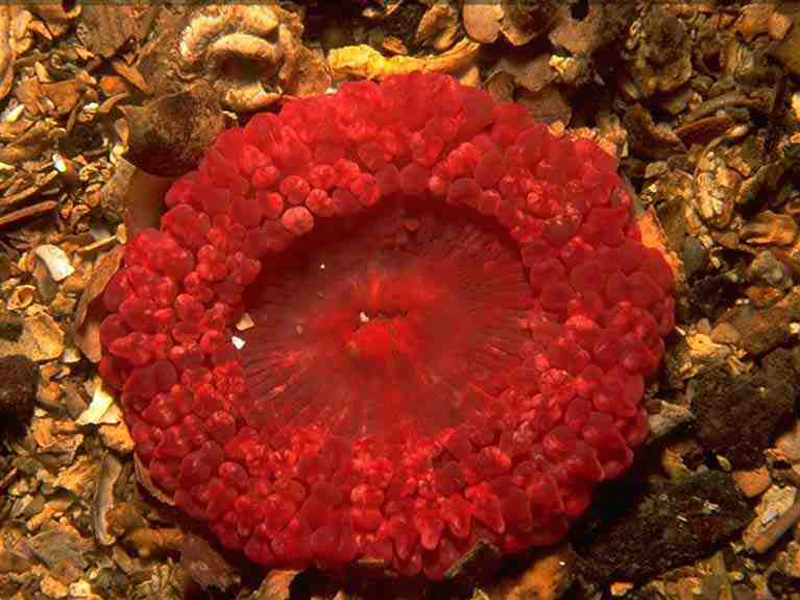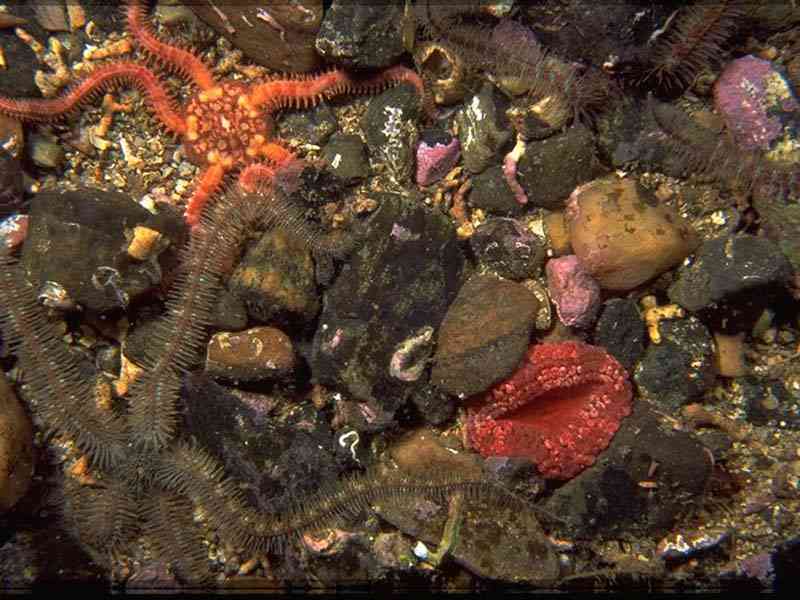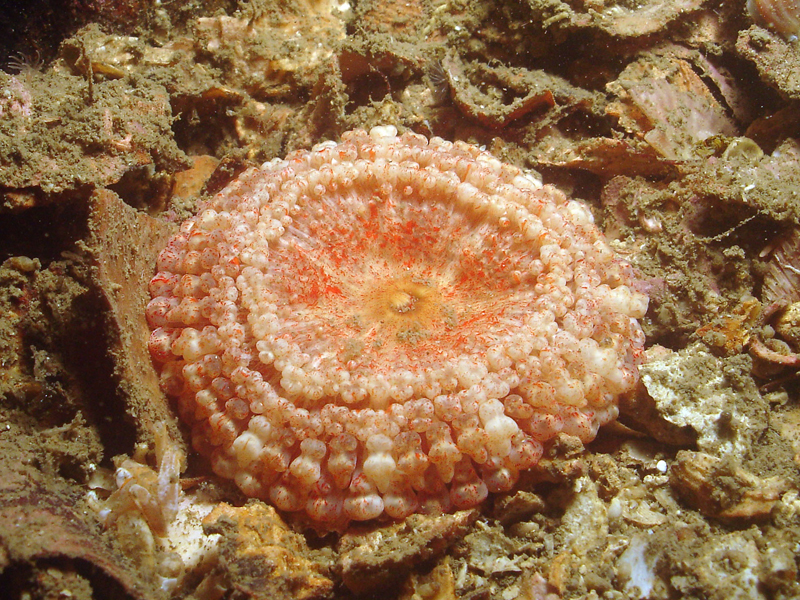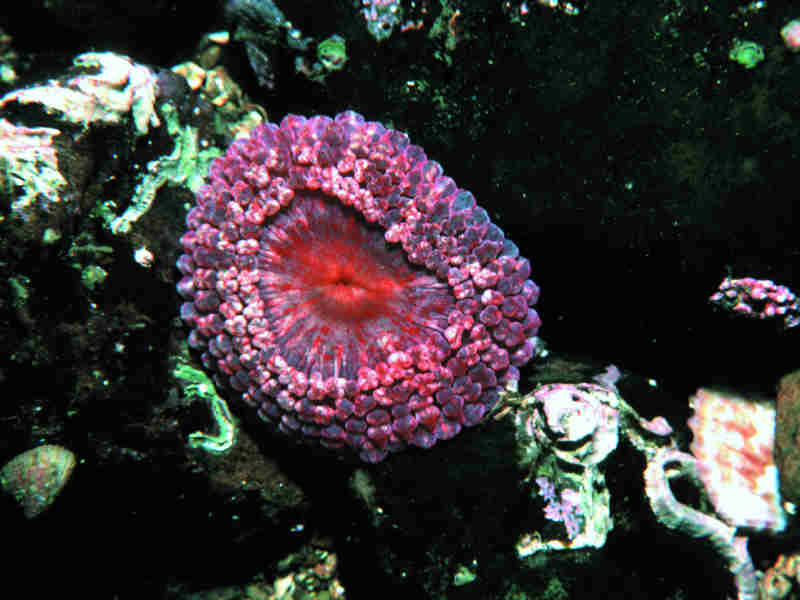Imperial anemone (Capnea sanguinea)
Distribution data supplied by the Ocean Biodiversity Information System (OBIS). To interrogate UK data visit the NBN Atlas.Map Help
| Researched by | Sonia Rowley | Refereed by | This information is not refereed |
| Authority | Forbes, 1841 | ||
| Other common names | - | Synonyms | Aureliania heterocera |
Summary
Description
Recorded distribution in Britain and Ireland
This species is rarely seen but has been recorded from the southwest of England, the west coast of Scotland and Wales, as well as the northeast coast of Ireland.Global distribution
Recorded from the west coasts of the British Isles and the northwest coasts of France.Habitat
This species can be found buried in sand, gravel or mud, and also attached to rocks and shells. Has been recorded from the lower shore to offshore depths of 600 m.Depth range
Lower shore - 600 mIdentifying features
- Wide bell-shaped column with a base of 7-9 cm in diameter.
- Up to 150 tentacles arranged in concentric cycles.
- Tentacles short with a terminal knob on each.
Additional information
This species' short tentacles distinguishes it from any other British anemone. In addition, they contain relatively few Stinging cells (nematocysts). Food particles are taken in when the throat everts, with no assistance from the tentacles. It is able to rapidly retract its disc and tentacles. Its broad base may be an adaptation to living in soft substrata as it acts as an anchor (Manuel, 1988).Listed by
- none -
Bibliography
Manuel, R.L., 1988. British Anthozoa. Synopses of the British Fauna (New Series) (ed. D.M. Kermack & R.S.K. Barnes). The Linnean Society of London [Synopses of the British Fauna No. 18.]. DOI https://doi.org/10.1002/iroh.19810660505
Picton, B.E. & Costello, M.J., 1998. BioMar biotope viewer: a guide to marine habitats, fauna and flora of Britain and Ireland. [CD-ROM] Environmental Sciences Unit, Trinity College, Dublin.
Picton, B.E. & Morrow, C.C., 2000. Encyclopaedia of Marine Life of Britain and Ireland. http://www.habitas.org.uk/marinelife/index.html, 2003-09-18
Stephenson, T.A., 1935. The British Sea Anemones, vol. 2. London: Ray Society.
Wood, E. (ed.), 1988. Sea Life of Britain and Ireland. Marine Conservation Society. IMMEL Publishing, London
Datasets
Centre for Environmental Data and Recording, 2018. Ulster Museum Marine Surveys of Northern Ireland Coastal Waters. Occurrence dataset https://www.nmni.com/CEDaR/CEDaR-Centre-for-Environmental-Data-and-Recording.aspx accessed via NBNAtlas.org on 2018-09-25.
Isle of Wight Local Records Centre, 2017. IOW Natural History & Archaeological Society Marine Invertebrate Records 1853- 2011. Occurrence dataset: https://doi.org/10.15468/d9amhg accessed via GBIF.org on 2018-09-27.
Manx Biological Recording Partnership, 2022. Isle of Man historical wildlife records 1990 to 1994. Occurrence dataset:https://doi.org/10.15468/aru16v accessed via GBIF.org on 2024-09-27.
NBN (National Biodiversity Network) Atlas. Available from: https://www.nbnatlas.org.
OBIS (Ocean Biodiversity Information System), 2025. Global map of species distribution using gridded data. Available from: Ocean Biogeographic Information System. www.iobis.org. Accessed: 2025-08-08
Citation
This review can be cited as:
Last Updated: 17/04/2008






